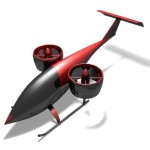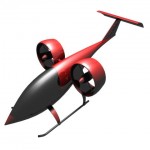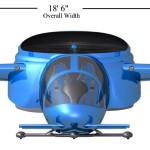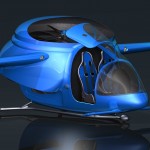My first post on this subject was off the wall. But I started looking and found some companies that are actually working on this. Some of them might even make sense. I would rather think of these as personal flying transportation, or a car replacement. Of course the infrastructure doesn’t exist to make this idea practical currently, but hey, it didn’t really exist for cars in the beginning either right?
The Skywalker VTOL personal aircraft.
The Skywalker VTOL (Vertical Takeoff and Landing) aircraft is designed utilizing a one piece molded bifurcated air duct. This arrangement supports the centrally located blade assembly. The pilot sits between overhead outlet ducts and controls the aircraft from a secure padded cockpit seat. The operator is not placed in a standing position, either above or below the rotating blades. The pilot’s weight is steadfast to the craft design and body leaning or weight shifting to influence flight direction and control is unnecessary.  Flight and motion controls incorporate 21st century electronic linear actuators and independently operated hand joysticks.
Another divergence includes a semi-enclosed counter rotating, dual shaft propeller design. Utilizing counter-rotating blades allow for a reduced blade disk area, without increasing the overall propeller diameter. A planetary gear transmission mated to the Subaru engine drives the fixed dual shaft propellers. The output spindles operate at approximately 2,000-2,500 rpm.
Also Gress Aerospace 

for several years now, as it has developed its unique control technology for advanced vertical take-off and landing platforms. If successful, the control technology greatly simplifies flying, offers increased stability and functionality and requires a much smaller footprint than a traditional helicopter, hence it has wide application in commercial, industrial, and consumer markets, particularly for transportation and surveillance. The technology allows 6-Axis orientation, and a much smaller platform size in VTOL aerial vehicles. During the past twelve months, Gress has successfully scaled its system from a 15%-scale platfrom to a 40%-scale platform, and now intends to press ahead with a 100%-scale platform, build and testing phase, during the next 36 months. Introduced within the three stage build plan will be a new hybrid power generation package allowing the vehicle increased endurance with minimal fuel consumption. Once unmanned flight has been demonstrated, Gress will target the manned light-aircraft industry with plans have for an automobile-sized single seat VTOL.
These are just a couple of the more mainstream ideas that are being activly developed. I can’t imagine the impact this would have for commuters. I wonder what handling would be like in adverse weather, landing in fog etc. How much more would go into getting a drivers licence for one of these? Would it be worth it?



 Excalibur is a purpose-built armed, tactical UAV. Excalibur fills a gap between current
Excalibur is a purpose-built armed, tactical UAV. Excalibur fills a gap between current